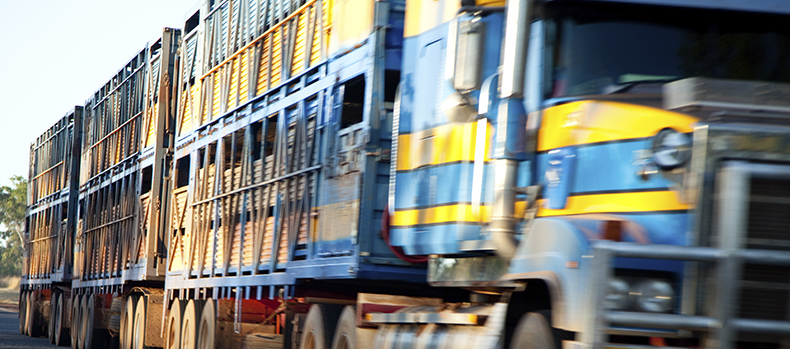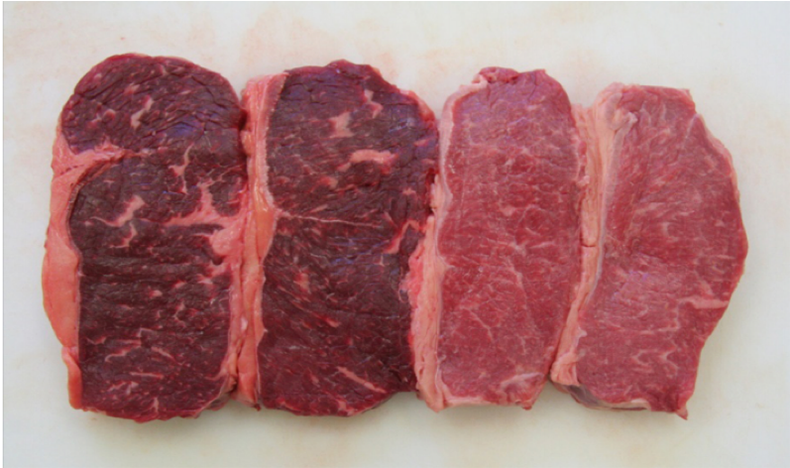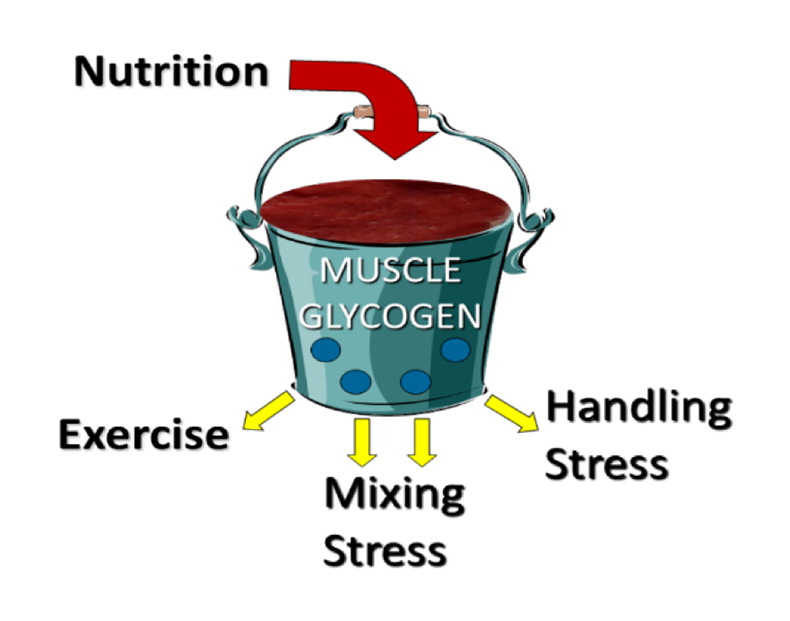How can I improve dark cutting + shrinkage?

Tech Talks with Beachport Green Cap
Progressive producers who are focussed on meat quality and animal welfare are consistently looking to re-assess and improve their cattle and sheep transporting practices.
On farm we are canvassing a lot of enquiries around how farmers can alleviate the stress from the transport practices that most commonly affect the quality of the end product;
• loading/unloading
• handling
• road conditions
• stocking density
• length of trip and
• social regrouping
Printer Friendly Version
These usual practices together or in isolation without specific care and focus can exacerbate stock stress levels.
Dehydration, behavioural changes, muscle damage, rapid depletion of glycogen reserves, loss of appetite and compromised immune system (Damtew A, et al, 2018) are among both the obvious and hidden stress consequences.
All of these metabolic changes influence the quality and quantity of meat at slaughter.
Most commonly producers will notice the effects of shrinkage and dark cutting on their bottom line once the transportation process has been completed.
Although it is realistic to expect some level of shrinkage; loss of animal’s weight from farm gate to slaughter however, certain management practises can minimise kilograms lost per animal.
Dark Cutting is a term describing inferior meat quality that is usually dark in colour causing a shorter shelf life and poor eating experience (MLA & LiveCorp, Factsheet 1, 2018). According to MLA (1), it’s estimated the Beef Industry’s average dark cutting rate is almost 10%, in dollar figures that’s just under $36 million lost per year. In the Sheep Industry, it’s estimated even higher at 15%.
Have you considered how much it is costing you?

“As the drought worsened, we were forced to wean calves much earlier than usual. This is where we were very impressed with the Green Cap used in the yards. The weaners settled very quickly and within a day off mum, they were gaining weight.
The Green Cap also had the extra benefit of preparing cattle to be trucked for long distances. Both adult cattle and young weaners travelled much better with minimal weight loss. Upon arriving at their destination, the cattle quickly settled and showed little to no signs of stress or exhaustion from having been on a truck.”
– Roger & Jenny Underwood, Eversleigh & Wallace Vale Droughtmasters, “Pine Hills” Wallumbilla, QLD
Shrinkage
Excretory shrinkage; loss of body weight due to rumen, GI tract and bladder contents emptying out is usually between 2-6% (MLA & LiveCorp, Factsheet 6, 2018). This is a normal process, usually occurring during pre-slaughter curfews and the first few hours of transport. If animals are not being slaughtered, recovery from this type of shrinkage is quick once they’re back on water and feed.
Tissue shrinkage is caused from dehydration and the body is overcompensating by utilising water from tissues such as meat and fat. This type of shrinkage is induced by long periods off feed and water up to 12 hours or greater, rumen microbes die reducing energy availability to the animal (MLA & LiveCorp, Factsheet 6, 2018). Shrinkage greater than 6% is a result of tissue shrinkage, at Beachport we have heard of up to 26% shrinkage on long haul trips. If animals are not being slaughtered, recovery from this type of shrinkage can take up to 1 month.
Dark Cutting
The major determinant of meat dark cutting is the quantity of muscle glycogen at slaughter.
Glycogen directly impacts the ultimate pH post-mortem because glycogen ensures the production of lactic acid to rapidly drop the pH of meat.
Low pH gives meat it’s bright red colour, improves tenderness, flavour, cooking consistency and shelf-life. Livestock mobilise glycogen from the liver under stress to compensate for energy loss during transport (Damtew A, et al, 2018).
Therefore, if the bucket is full of glycogen from good nutrition, to reduce how rapidly the bucket empties, we can ‘plug’ a number of holes by altering management practices to reduce stressors.

Importance of Magnesium
Magnesium is very important for enzyme function, energy metabolism and how the animal hormonally responds to stress. Feed changes close to transport can adversely affect Magnesium availability, pastures high in non-protein nitrogen and potassium will reduce the animal’s ability to absorb magnesium.
An animal deficient in Magnesium can show signs of aggression, agitation and high muscle tremors, all accelerating energy utilisation. By accelerating energy utilisation and reducing the efficiency of enzyme functioning and energy metabolism the rate glycogen is used from body reserves increases and the rate glycogen stores are replenished reduces.
In every livestock sale transaction Producers are being paid on the presentation of their stock; whether it’s weight of animals at the abattoirs, live export, feedlot entry/exit weights, condition of stock when selling through the yards or buying on farm, in all these scenarios’ presentation pays.
To capitalise on the months of hard work leading up to finishing your stock, reducing stress at the point of sale must be front of mind.
Practices leading up to transport to reduce shrinkage and dark cutting;
• Avoid major feed changes within 1 week of slaughter, especially on pasture fed systems, dark cutting incidences can increase due to feed changes disrupting available energy and mineral interactions reducing the availability of magnesium.
• In the last week before slaughter begin increasing the fibre content of livestock on high grain rations.
• Avoid re-socialising mobs within 2 weeks of slaughter.
• Provide clean, quality water at all times leading up to curfews.
• Provide stock with a high Magnesium supplement in the week leading up to slaughter.
• Approach handling livestock in a quiet and calm manner in the yards and when loading and unloading.
• Adhere to recommended stocking densities when loading trucks.
• Avoid transporting during extreme weather events.
• Driving to road conditions will reduce stress while livestock are on the truck.
How does Green Cap help lower stress?
Green Cap is a 3 in 1 supplement containing trace elements and minerals, naturally occurring fulvic acid and amino acids. It’s also available in our Organic Range. Fulvic acid is a natural electrolyte that improves absorption, availability and retention of nutrients, helping animals retain and absorb key nutrients and water to reduce shrinkage. It also aids in replenishing muscle glycogen stores disturbed during stress periods by providing livestock with a quality magnesium source reducing the incidence of dark cutting. A stressed animal also has higher requirements for energy and protein. By providing natural amino acids via seagrass and kelp extracts, Green Cap’s providing the building blocks for protein to boost processes such as energy metabolism, immune responses and reduce shrinkage.
Green Cap Application
Using a Beachport Dispenser and empty drum, measure the correct dosage of Beachport Liquid Minerals Green Cap or Organic Green Cap into the empty drum, screw on the Dispenser and put into the trough. It meters out over 72 hours so ensure access to water over this period.
• Weaning; Dose into water trough upon entry to yards or weaning paddock.
• Transport; The ideal time to dose is 3 to 7 days prior to trucking. To be dosed no less than 24hrs prior to trucking.
• Feedlots; Dose with Dispenser into water trough upon entry to the feedlot.
• Change of diet: Dose via water or onto feed when there is a major change in feed source (dose rates are the same as weaning.)
Green Cap Product Tips
• DO NOT treat livestock within 24 hours of transport with Green Cap or Organic Green Cap.
• Leave approximately 1/3 of air in the drums when dispensing product into trough.
• Always use a BLM Dispenser to dispense product out over a three-day period.
• DO NOT pour the entire mobs’ worth of Green Cap or Organic Green Cap into a trough without using a dispenser, it may turn livestock off water causing significant stress.
Please click the links below for further information:
– Green Cap
– Organic Green Cap
– Find your nearest stockist
Get in touch with our team.
References
Damtew, A. Yidersal, E. Ebrahim, H. Tsegaye, S. Msigie, D. 2018. The Effect of long Distance Transportation Stress on Cattle: a Review. School of Veterinary Medicine, Woldia University.
MLA & LiveCorp October 2018. Factsheet 1: Good Practice can reduce dark cutting for better meat quality and higher returns.
MLA & LiveCorp October 2018. Factsheet 6: Good Practice can reduce animal stress and shrinkage for increased profits.
(1) MLA dark cutting references to % and cost.
https://www.mla.com.au/Research-and-development/Search-RD-reports/RD-report-details/Eating-Quality/Dark-cutting-in-livestock/2616
